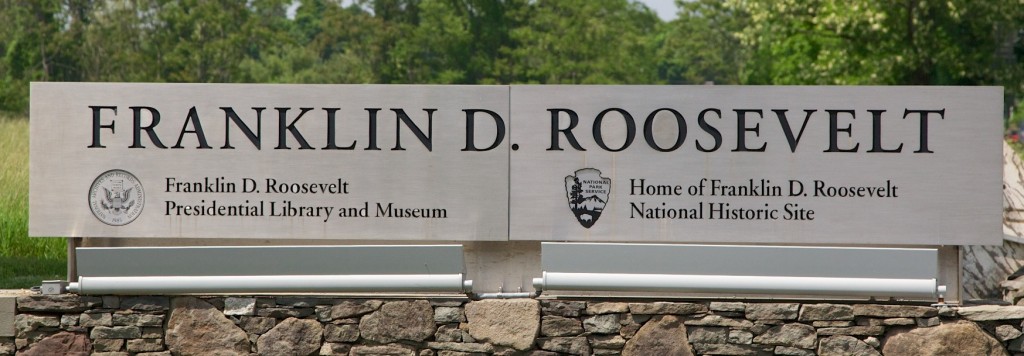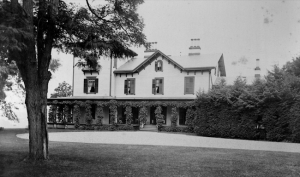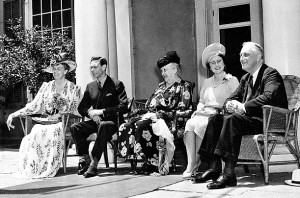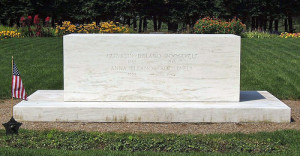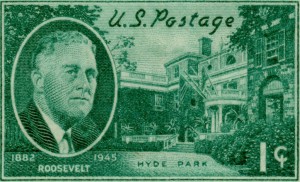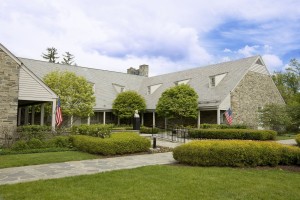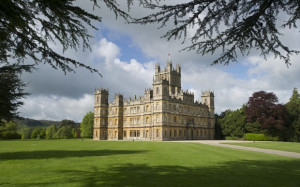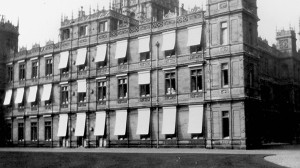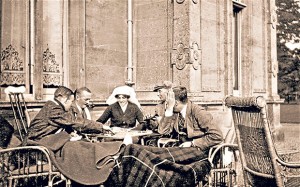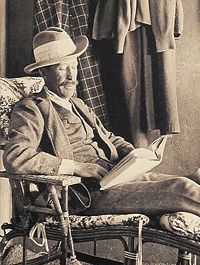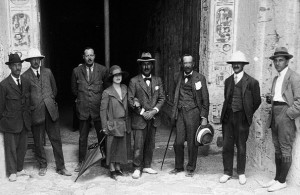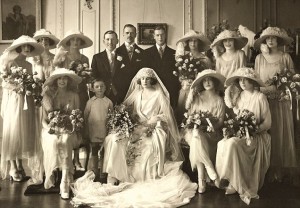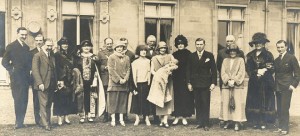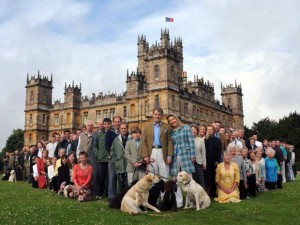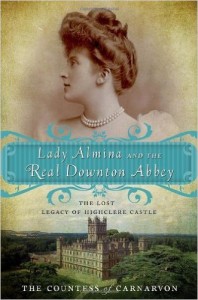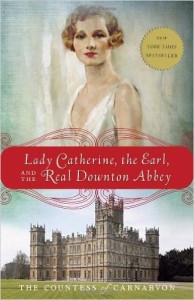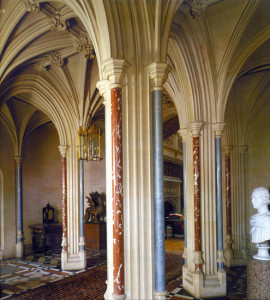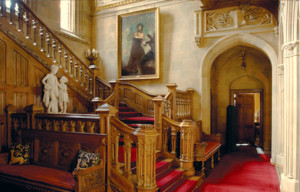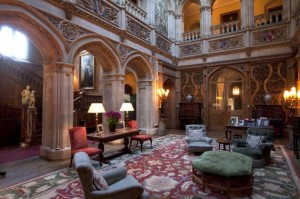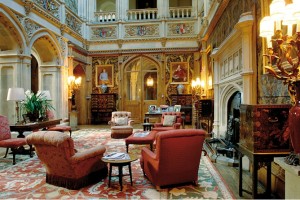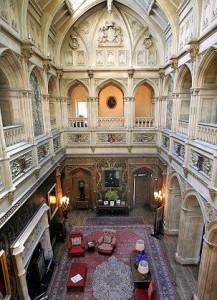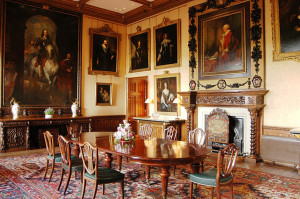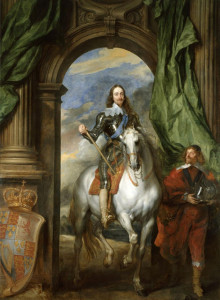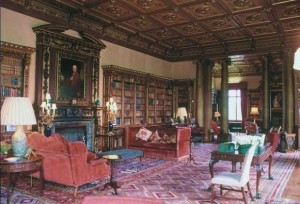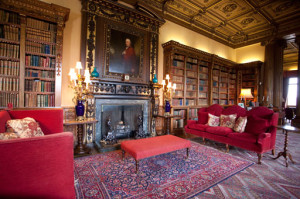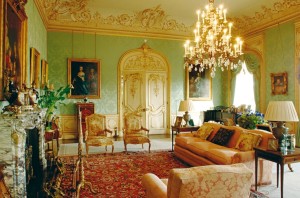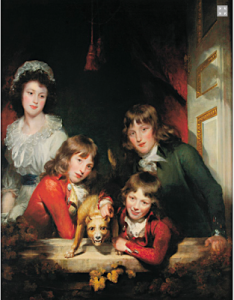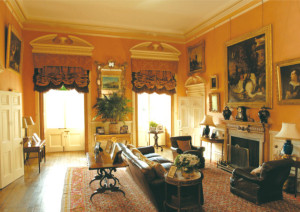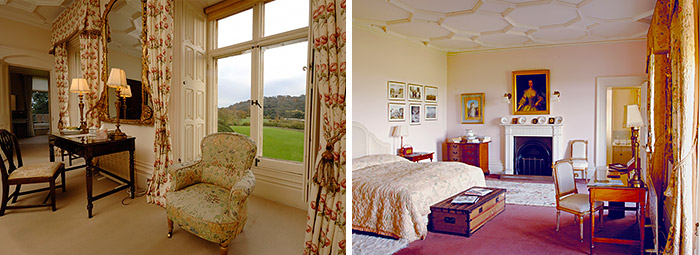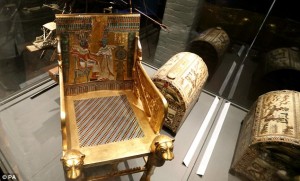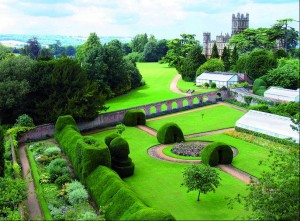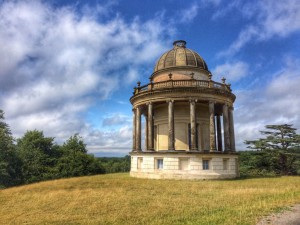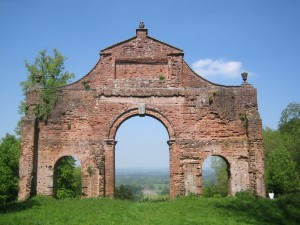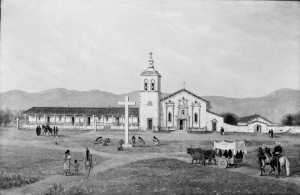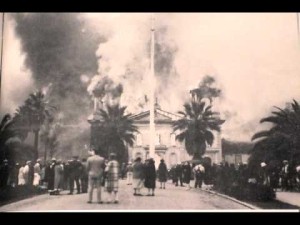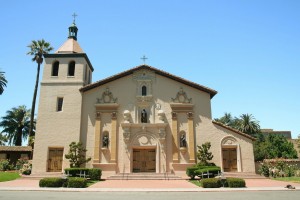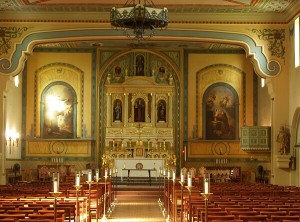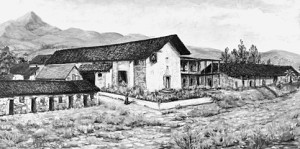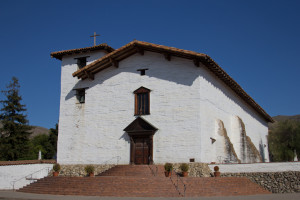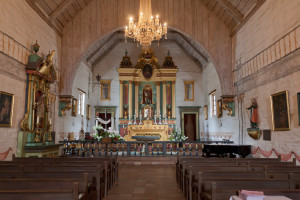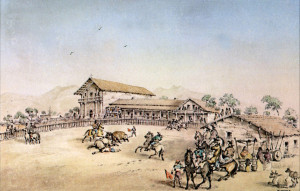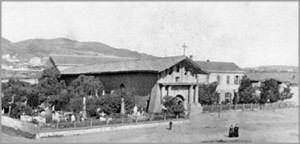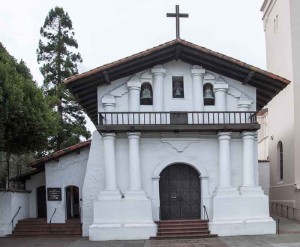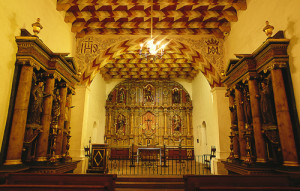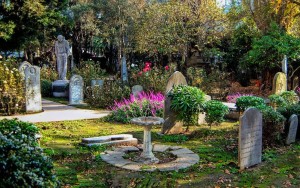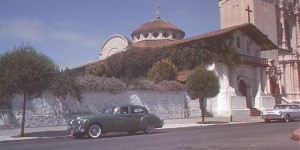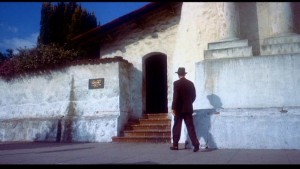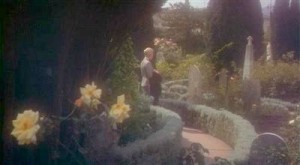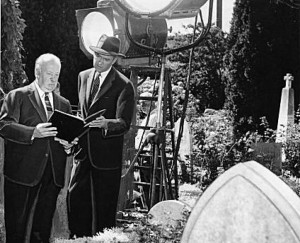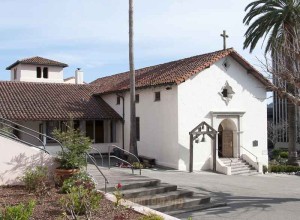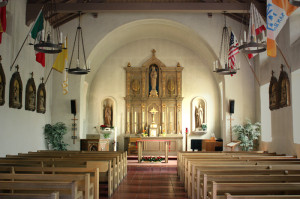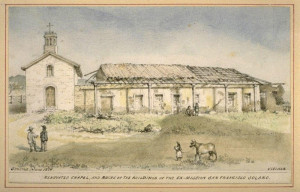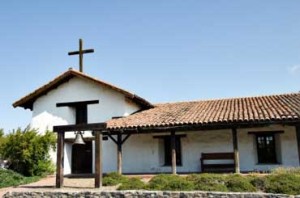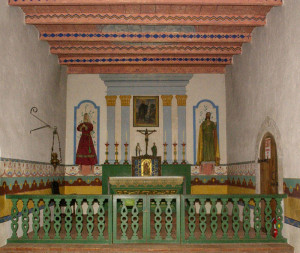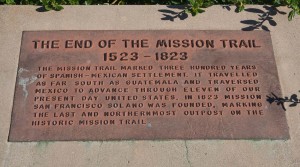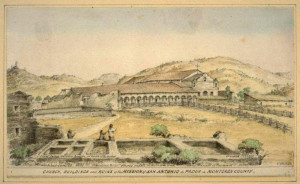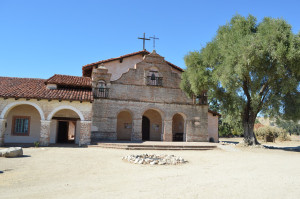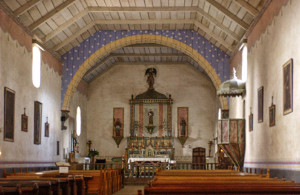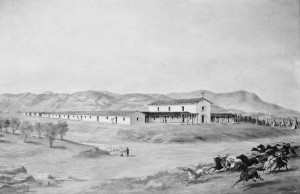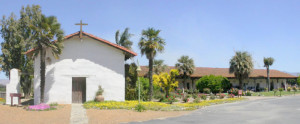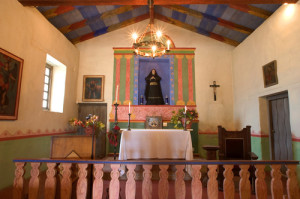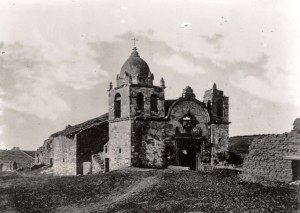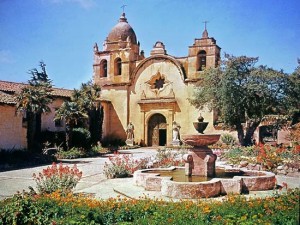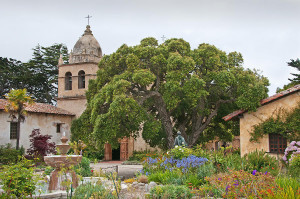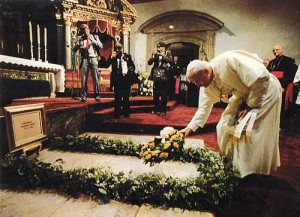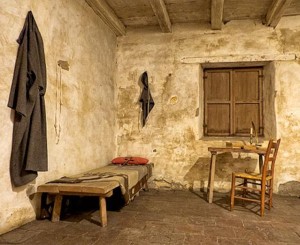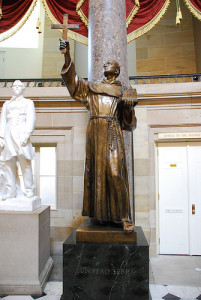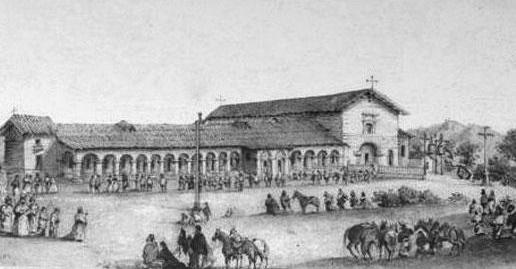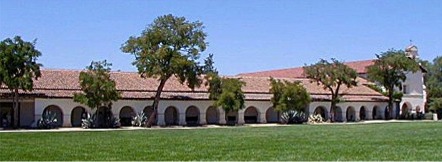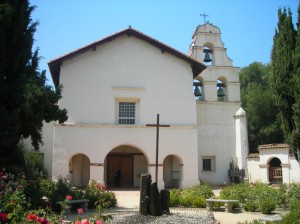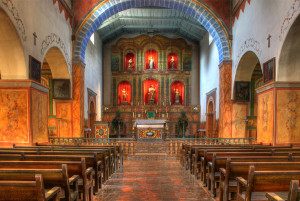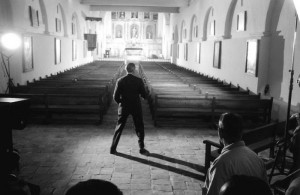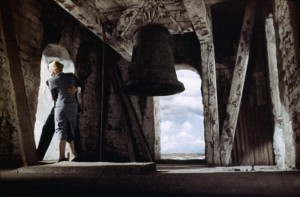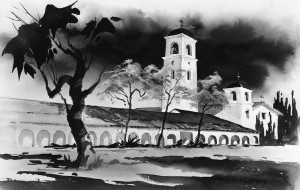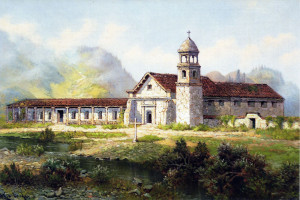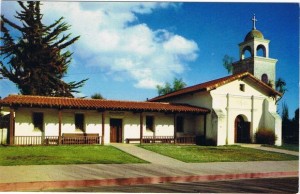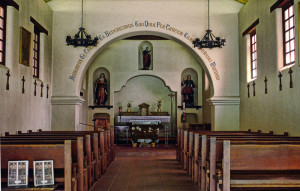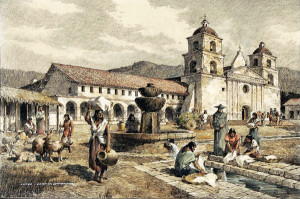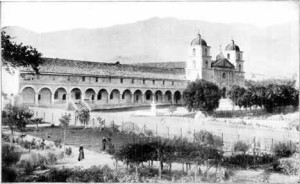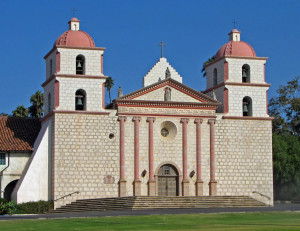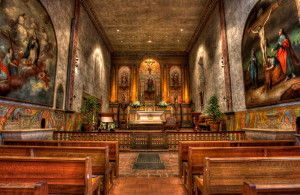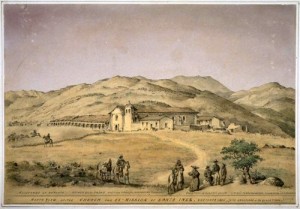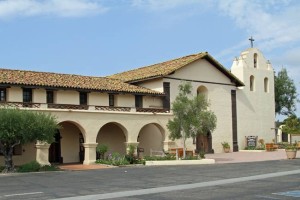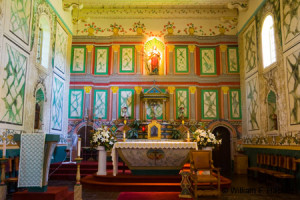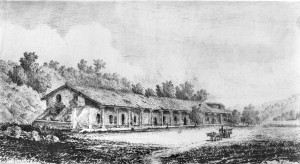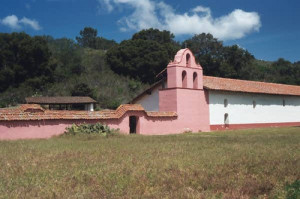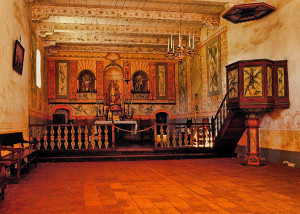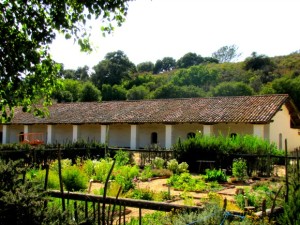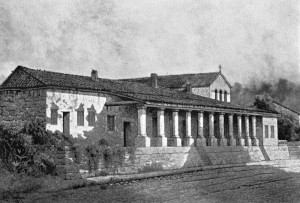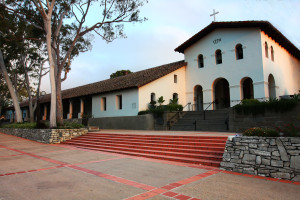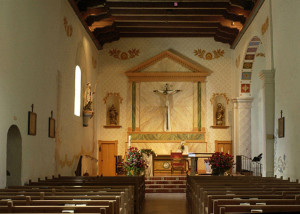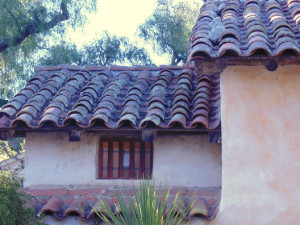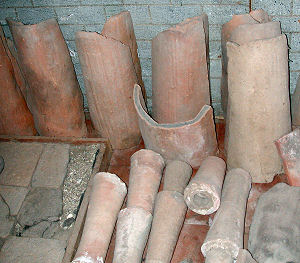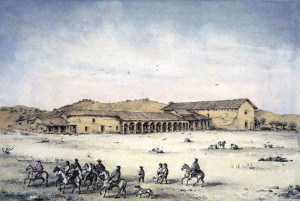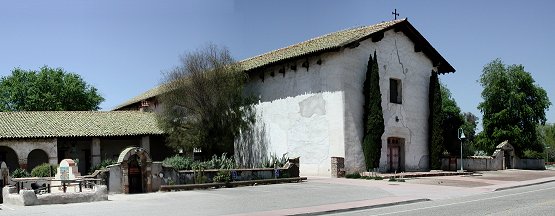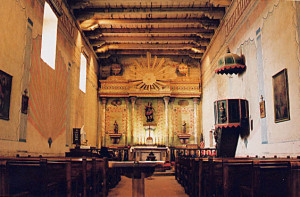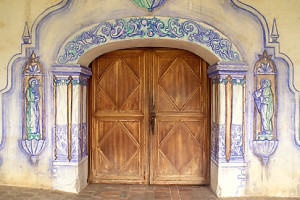In honor of Franklin Delano Roosevelt (born: January 30, 1882 died: April 12, 1945) this Travel post is about the Franklin D. Roosevelt National Historic Site located in Hyde Park along the Hudson River about 90 miles north of New York City, NY. In this post I will discuss the history of the Roosevelt estate in Hyde Park and give a tour of the numerous buildings located there including Springwood which was FDR’s childhood home, where he lived for most of his life and where he is buried. I will also discuss Top Cottage which FDR used as his private retreat, the nearby Val-Kill which was the personal home of Eleanor Roosevelt in the later years and the FDR Presidential Library & Museum which are all located at the Franklin D. Roosevelt National Historic Site.
A brief history of the Roosevelt Estate in Hyde Park, NY
In 1697, a large land grant of 220 square miles was given by the English King William III to a group of nine businessmen from New York City. Each of the nine land parcels was divided equally with access to the Hudson River. Located near Hyde Park, one of the land grants went to William Creed who built the original house on the property. In 1845, the property was purchased by Josiah Wheeler and the existing Federal style house was renovated into a larger Italianate style house.
Then, in 1866 when James Roosevelt bought the Springwood estate it comprised of about 640 acres of land on which sat the house and a recently built stable and horse track. At the time Roosevelt was the vice president of the Delaware and Hudson Railway and he was married to his first wife, Rebecca Howland and they had a son named James Roosevelt. After Rebecca died in 1876, Roosevelt married Sara Delano in 1880 and they had one son named Franklin Delano Roosevelt (the future 32nd President of the United States), he was born in the second floor master bedroom. Roosevelt continued to make improvements to Springwood, such as expanding the size of the house to include additional rooms, enlarging the servant’s quarters and building a large carriage house nearby on the property. Roosevelt died in 1900, probably as a result of his recurring heart problems, and he left the Springwood estate and all his other holdings to Sara and Franklin only received a small monetary inheritance.
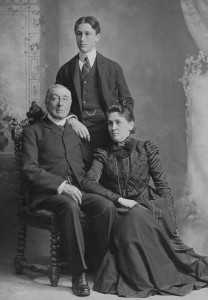
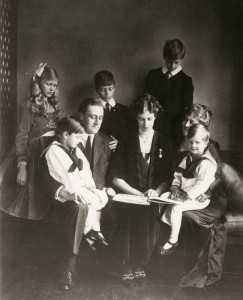
Franklin was very close to his over-protective mother and had agreed to remain at Springwood after his marriage to Eleanor in 1905. By 1915, Franklin was working with the architectural design firm of Hoppin and Koen from New York City to build two large additional sections faced with fieldstone and a third floor with more rooms which doubled the size of the original house. The clapboard exterior of the house was replaced with stucco, a small portico with elegant columns was added to the front entrance and the old porch was replaced by a wider terrace made of more fieldstone. Of course, Franklin’s mother financed all these renovations and she also decorated the interior of the house to her own personal style incorporating Franklin’s book, stamp and coin collections into the design while leaving Eleanor very little room to make her own choices for the home. Eventually, two additional structures were built on the property; Top Cottage which was a stone cottage built as Franklin’s personal retreat and Val-Kill a modest house Eleanor used quite frequently.
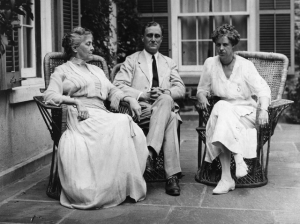
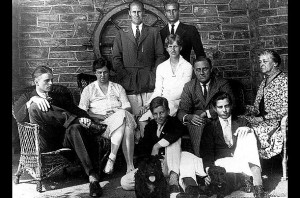
During Franklin’s presidency the Roosevelt Estate in Hyde Park became known as the “Summer White House”. Franklin and Eleanor hosted many prominent national and international visitors, perhaps the most famous guests were King George VI and Queen Elizabeth in June 1939. After the Royal couple toured Canada, New York City and then Washington D.C. for a few days they were invited to join the Roosevelts for a more relaxing time at Hyde Park. This was a very historical moment because it was the first time a reigning monarch of England had visited the United States. It was also the perfect opportunity to form stronger political and social alliances between the two countries as Britain and Europe were heading toward another war. In contrast to the formal State Dinner held a few days earlier at the White House, the menu planned at Hyde Park was a simple picnic luncheon of hot dogs and beer! The end result was that the visit of the charming Royal couple was a huge success with the American public and three months later England declared war on Germany and Roosevelt was able to convince Congress to take steps to send aid.
During the 12 years of Franklin’s presidency he often came home to Hyde Park and he always returned on the eve of elections and when he had won his four presidential terms he would deliver his victory speech from the front terrace of Springwood. In 1939, near the end of his second term, Franklin was looking forward and preparing to have his presidential papers and other historical records contained in one place to preserve the collection for scholars and historians to research and review in the years to come. The Franklin D. Roosevelt Presidential Library and Museum was built at Hyde Park and completed in 1941. When it opened to the public shortly thereafter it became the first Presidential Library which set precedence for the future. (For more information on the Franklin D. Roosevelt Presidential Library and Museum, please look for the section later in this post)
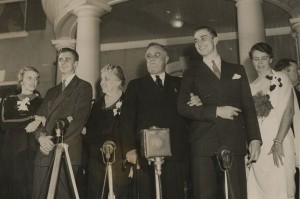
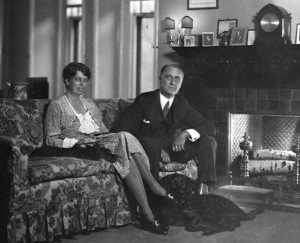
In March 1945, Franklin made his last to Hyde Park before traveling to Warm Springs, Georgia for some rest after winning his fourth term as President. By this time, Franklin was in very poor health and he died on April 12, 1945 at the age of 63. Per his request he is buried in the Rose Garden of Springwood. Prior to his death, Franklin had made plans to donate the Roosevelt Estate in Hyde Park to the American public with the stipulation that his family would maintain a lifetime right to usage of the property. After his death, the Roosevelt family relinquished their rights and the estate was given to the U.S. Department of the Interior as a National Historic Site to be opened to the public and administered by the National Park Service. By this time Sara Roosevelt, Franklin’s mother had died in September 1941 and following her husband’s death Eleanor had continued to live at Val-Kill, her personal home on the estate, dividing her time between there and an apartment in New York City. She continued to travel both nationally and internationally working hard for her political causes until she died on November 7, 1962 at the age of 78, she is buried beside her husband in Hyde Park.
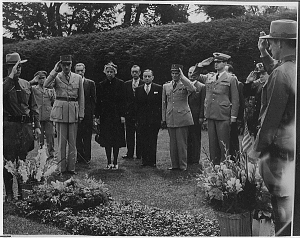
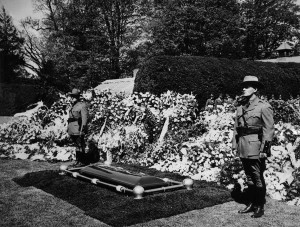
The Home of Franklin D. Roosevelt National Historic Site
When planning a trip to the Franklin D. Roosevelt National Historic Site I would consider scheduling a whole day at Hyde Park because there are numerous buildings to tour on the estate as well as the Franklin D. Roosevelt Presidential Library and Museum. For important information about the Home of Franklin D. Roosevelt National Historic Site hours of operation, fees, tours and directions, please click on the link to the National Park Services website at www.nps.gov/hofr. (For more information on the Franklin D. Roosevelt Presidential Library and Museum, please look for the section later in this post)
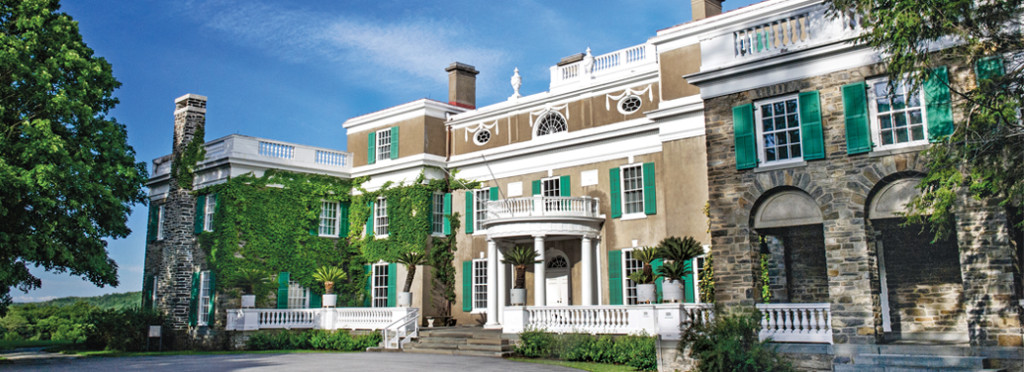 A brief tour of Springwood – the birthplace and home of Franklin D. Roosevelt
A brief tour of Springwood – the birthplace and home of Franklin D. Roosevelt
Springwood Mansion was the birthplace and home of Franklin D. Roosevelt, in fact during a tour of the house visitors will see the second floor master bedroom where he was born in 1882. Franklin lived at Springwood for most of his childhood, he lived there after his marriage to Eleanor, raised their children there and returned often during throughout his political career including the time he was President of the United States.
When touring the various rooms of Springwood one gets the impression that despite the fact that Franklin and Eleanor lived there it was very much the home of Sara Roosevelt, Franklin’s mother. Mrs. Roosevelt made all the decisions about the running of the household from daily menus to the decorations and furniture choices for the various rooms of the house.
The Entrance Hall
Visitors will note that the Entrance Hall has an extensive display of Franklin’s collection of paintings. Most of the collections on the walls are naval paintings; Franklin had been appointed Assistant Secretary of the Navy in 1913 and held the position until 1920. Another part of the collection was historical political cartoons lampooning English Kings and this became a concern when King George visited Hyde Park in 1939. Of course, when the King arrived for his visit, the King quickly commented that Franklin had a few that he was missing from his own personal collection back in London. Special Note: Behind the main staircase at the end of the Entrance Hall is an elevator which was added after Franklin became stricken with polio to aid him in moving between the floors of the home.
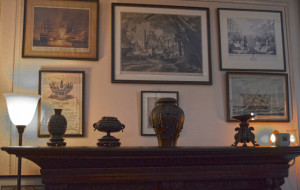
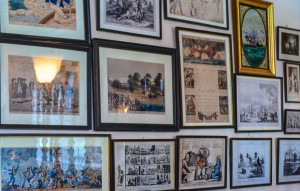
Living Room and Library
Franklin was a serious collection, besides his naval art and political cartoon collections, he had over 300 taxidermy bird specimens, over 200 ship models, over a million stamps which he started collecting at the age of eight (the stamps were later sold at auction in 1946 for about a quarter of a million dollars) and also thousands of coins and banknotes from around the world and political campaign buttons and medallions. Franklin worked on his collections from the Library at Springwood, the room also holds approximately 14,000 books. Special Note: After his death in 1945, several FDR commemorative stamps were issued from the U.S. Postage Department, shown below is the 1945 FDR stamp featuring the house at Hyde Park. (I wonder what Franklin would have thought about that!)
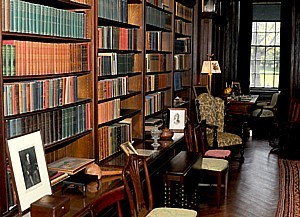
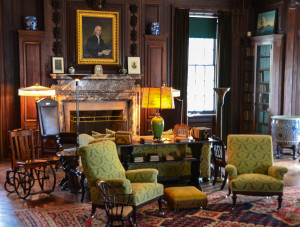
Music RoomDresen Room
The Music Room at Springwood is also known as the Dresden Room because of the collection of Chinese porcelain displayed in the room in particular the impressive chandelier, the pieces were acquired by Sara Roosevelt’s family when they lived in China. The Dresden Room and the adjacent dining room (shown in the photos below) were often used when Franklin and Eleanor entertained guests. Special Note: Displayed on the top of the piano is a collection of autographed photographs of some of the famous guests that visited the Roosevelts at Hyde Park.
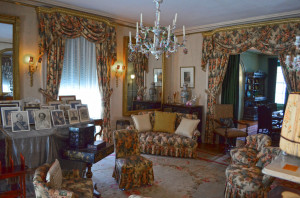
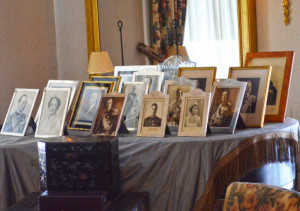
Additional Rooms at Springwood
Other rooms to see at Springwood are the bedroom where Franklin was born in 1882 and another bedroom where Franklin lived as a boy which was also used years later by his own sons. During the house’s renovation in 1915, a new suite of rooms was built in the new addition for Franklin and Eleanor to allow them some much needed privacy living in the home that was essentially was Sara Roosevelt’s home. Then in 1921, after Franklin was stricken with polio, adjustments were made to alter the arrangement of the rooms in this section of the house and one of the former dressing rooms was made into a separate bedroom for Eleanor.
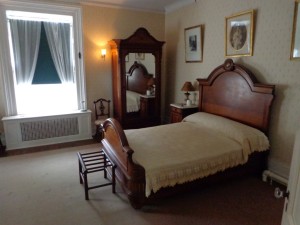
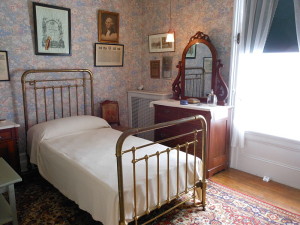
For more information on Springwood hours of operation, fees and available tours, please check out the FDR National Historic Site website at www.nps.gov/hofr
Top Cottage – the private retreat of Franklin Roosevelt
After Franklin was stricken with polio he felt the need to build a private retreat separate from Springwood and the interior would be specially designed to accommodate his handicap needs and to be fully accessible by wheelchair. The exterior design reflects the Dutch Colonial Revival style of architectural that was common in the Hyde Park area, the house was one story with only two bedrooms. The site where Top Cottage was built, at the time it was selected, had wonderful views of the Hudson River and the Catskill Mountains.
Franklin originally intended Top Cottage as his primary residence after he left office, but things changed when he won an unprecedented third and then fourth term as president. In the years following its construction, Franklin entertained many national and international political people at Top Cottage, most notably King George VI and Queen Elizabeth of England in 1939.
After Franklin’s death in 1945, his son Elliott Roosevelt lived there for a short time and then later sold the house to the Potter family who owned the property until 1996. Eventually it received the honor of a National Historic Landmark and then in 2001 it was given to the National Park Service who opened the house to the public that same year. For more information on Top Cottage hours of operation, fees and available tours, please check out the FDR National Historic Site website at www.nps.gov/hofr
Val-Kill – the Eleanor Roosevelt National Historic Site
Located a short distance from Springwood is Val-Kill which was used by Eleanor Roosevelt’s as her personal home. Franklin suggested that his wife built a small cottage on the Hyde Park estate to be used by Eleanor as a personal retreat. Construction on Val-Kill which was built adjacent the original Stone Cottage and completed in 1925; a year later another larger building was built nearby to hold the Val-Kill Industries which made furniture but it closed a decade later in 1936 during the Great Depression.
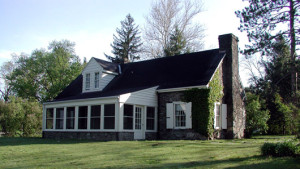
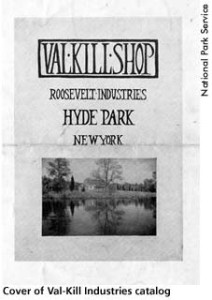
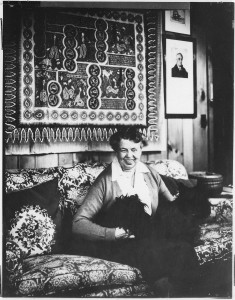
Eleanor considered Val-Kill to be her first “real” home and when Franklin was not in residence at Springwood Eleanor would seek privacy at Val-Kill to live a simpler life, work on her writing projects and informally entertain her friends to frequently discuss politics. After Franklin’s death in 1945, Val-Kill became her main residence and, in the years to follow, many national and international leaders came to pay their respect and to seek her counsel, such as Nikita Khruschchev and John Kennedy and later members of the United Nations.
Today, Val-Kill and Stone Cottage are administrated by the National Park Service, it is the only National Historic Site dedicated exclusively to a First Lady of the United States and since 1984 the buildings have been opened to the public. For more information on Val-Kill hours of operation, fees and available tours, please check out the FDR National Historic Site website at www.nps.gov/hofr
The Franklin D. Roosevelt Presidential Library and Museum
The Roosevelt Presidential Library and Museum was the first library solely dedicated to a President of the United States and the only one to be actively used by a sitting president (some of Franklin’s “fire-side chats” broadcast on the radio were made from the library in Hyde Park). As Franklin’s second term was coming to a close (and not realizing the possibility for his unprecedented third and four terms in office) he saw the need to plan a separate facility to store his historical papers, books and other memorabilia spanning his many years in political office. This was a unique idea because prior to this time most presidential papers, etc. were generally held in private collections or donated to the Library of Congress.
Special Note: Following Roosevelt’s example, Congress passed the Presidential Libraries Act in 1955 which regulated the process and procedures to create and maintain future libraries to preserve the papers of the Presidents of the United States which would be built by private funding and then administrated by the National Archives. Then in 1978, the Presidential Records Act limited the size and financing of the building of future museums but FDR’s original idea for preserving presidential papers in one location and accessible to the public has proven to be a very important historical idea for future generations.
In 1939, Sara Roosevelt donated 16 acres of land in Hyde Park, New York to build the library (at that time Franklin’s mother actually owned the Roosevelt estate and not Franklin). The building dedication took place on November 19, 1939 and Franklin was there to lay the cornerstone at the ceremony. The library was built according to Franklin’s design ideas in a Dutch Colonial Revival architectural style and constructed from Hudson Valley fieldstone and was opened to the public on June 30, 1941. Franklin paid his last visit to Hyde Park in March 1945 and he died a short time later on April 12 at Warm Springs, Georgia.
The building now holds the political papers from the time when Franklin was a New York State Senator from 1910 to 1913, assistant Secretary of the Navy from 1913 to 1919, New York Governor from 1929 to 1932 and President of the United States from 1933 to 1945 (Franklin holds the record as the longest serving President because since that time legislation passed to limit a President to only two terms). Also stored at the library are Franklin’s personal correspondences, family papers and books as well as his extensive collections of U.S. Naval memorabilia, political cartoons, stamps and coins.
After Eleanor Roosevelt died in 1962, her large collection of personal papers and correspondence dating from her time at the White House and afterwards through her work at the United Nations were given to the library and eventually in 1972 a separate wing was built and dedicated to her life and public service. Then, in 2009 the FDR Library received $17.5 million from the federal government to bring the collections at the facility up to current archival standards in the assurance that the historical documents and artifacts would be preserved and stored properly for future generations; on June 30, 2013 the library was rededicated in a special ceremony 72 years after the original dedication.
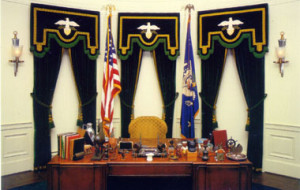
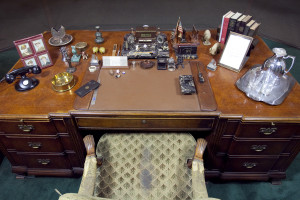
For more information on the FDR Presidential Library and Museum hours of operation, and fees, please check out their website at www.fdrlibrary.marist.edu/library

